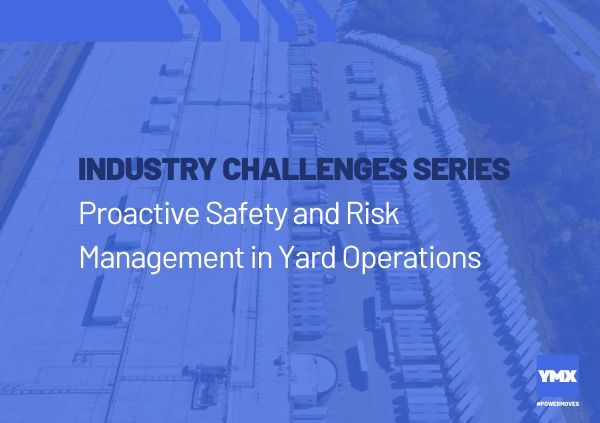In yard operations, being reactive about safety and risk management can put both your site and your employees in dangerous situations. You might have vests, cones, and proper lane markings in place, but that’s just the bare minimum of safety and risk management in the yard.
To be effective, safety must be proactively managed, communicated, and embedded into operations every single day.
Too often, safety procedures aren't built into the operation upfront. Protocols are unclear, and incident reports are inconsistent.
The Impact of Treating Safety and Risk Management as an Afterthought in Yard Operations
Legacy service providers rarely seem to make safety programs a high priority. We often see inconsistent safety training and a lack of risk mitigation protocols, which leads to:
- Poor visibility, due to unmarked paths and an inefficient yard flow.
- Employee fatigue, both physical and mental, from constant firefighting in unsafe conditions.
- Higher risk of collisions and accidents, caused by a lack of consistent movement protocols.
Standardized Protocols Reduce Risk and Improve Yard Performance
When safety and risk management are treated as reactive, check-the-box exercises, it creates a major disconnect in yard operations. But when safety and risk management are a proactive, standardized part of yard operations, the yard becomes safer, more efficient, and more reliable.
Safety and risk management protocols matter for:
- Consistency: Every team, shift, and site across the network will follow the same protocols
- Visibility: Safety concerns and plans are communicated to the team early, and incidents are logged immediately
- Training: Safety is reinforced through coaching, structured training programs, and audits
- Accountability: Protocols are well-documented and can be tracked, revised, and enforced
Safety-First Yards Perform Better
When safety and risk management are built into your yard operating system, there are significant improvements across every part of yard operations:
- Fewer Incidents: Standardized protocols reduce near-misses, accidents, and downtime in the yard.
- Better Workforce Performance: Employees feel safe and supported, which boosts morale, job satisfaction, and retention.
- Reduction in Liability: Clear documentation and reporting reduce exposure and legal risk.
- Operational Efficiency: Gain real-time visibility, data-driven insights, and repeatable processes.
Real-World Examples of Embedded Safety in Yard Operations
At YMX, safety isn’t an afterthought. It’s baked into every part of our operations. Here are a few examples of how we embed safety and risk management into the yard:
- Yard and trailer management, with dedicated driver training
- Trailer blind spot awareness training for trailer maneuvering
- Communicating spotter truck safety best practices, which are reinforced during in truck inspections
- Field safety protocols, including lot assessments and safety plans to manage the site operating risks
When legacy spotting providers treat safety as paperwork, yard operations become a liability in the supply chain. At YMX, safety isn’t a checkbox item. It’s a foundational part of our culture.
Ready to shift from firefighting safety issues to preventing them altogether? Let’s get started.



%20(1).png)
%20(7).png)
%20(11)%20(1).webp)